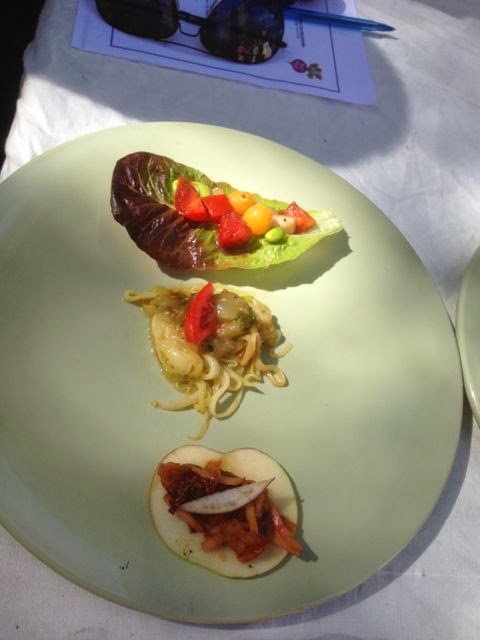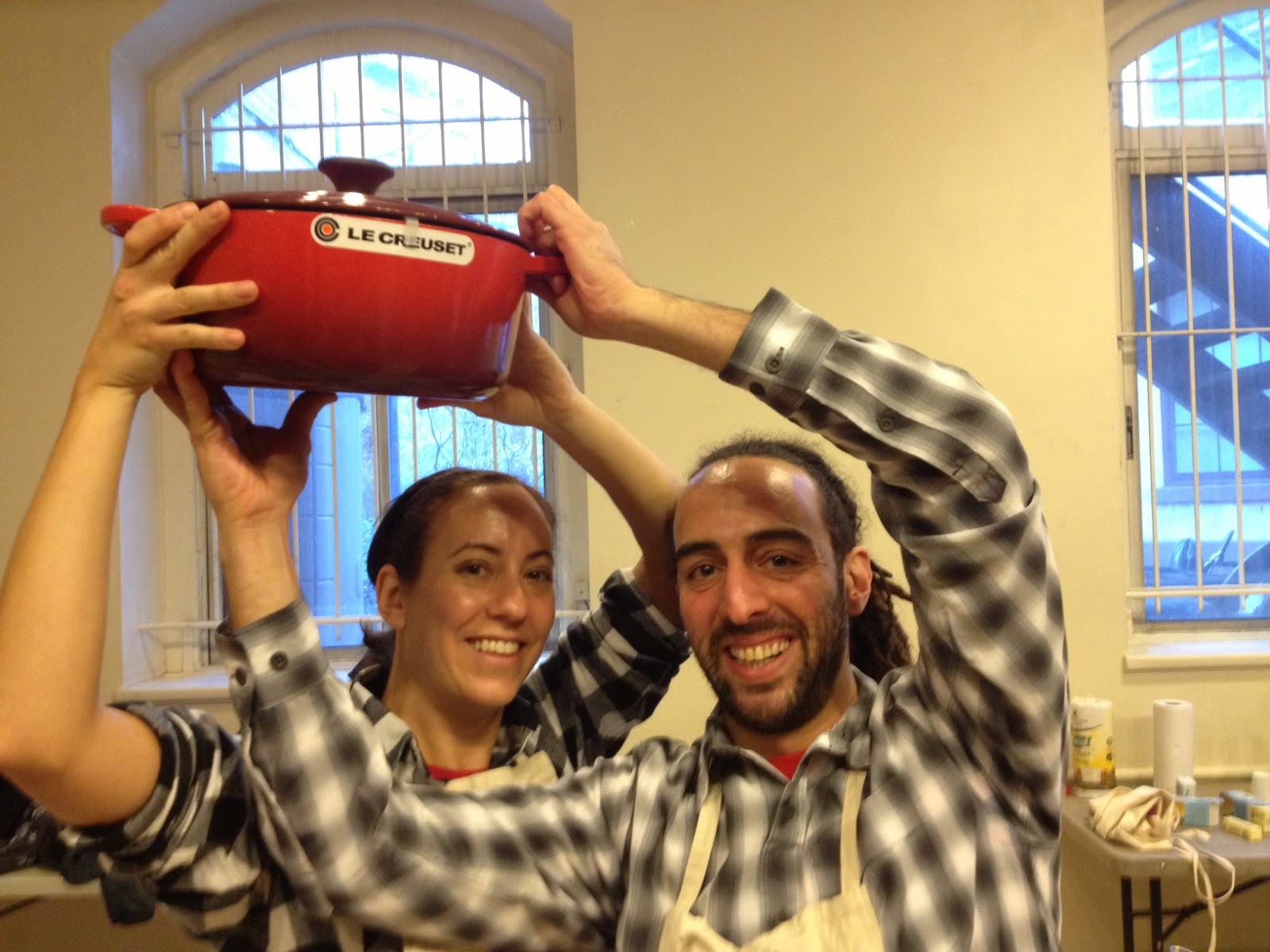CSA Member Donna Gallers shares this recipe:
This refreshing dessert is a great way to use up all that extra fruit from the farm share or farmer’s market before it gets over-ripe (or even when it does — just cut away any parts that are bad). It is thickened with kuzu root starch, which is available as a chunky powder in natural food stores, often in the macrobiotic foods section. The kuzu adds no discernible flavor to the dish.
Prep & cooking time: Approximately 45 minutes (plus cooling time if serving chilled)
Yield: 4 to 6 servings
Ingredients:
- 3-4 cups fresh peaches and plums (I used 6-8 small peaches and 6 small prune plums)
- Handful of blueberries if you have them
- 3 tbsp kuzu root starch
- 1 ½ cups water
- 1-2 lemon wedges
- 1-2 tbsp natural sweetener of your choice (optional—you can try agave, honey, maple syrup, etc. I have also used lucuma powder.)
Directions:
Wash, pit and cut fruit into small pieces (approx. bite size). Place in a saucepan and add water. Bring to a boil and then reduce heat. Add the juice of the lemon wedges, and sweetener if desired (I like the naturally tart fruit flavor and often leave mine unsweetened).
Simmer at low to medium heat for about 20 minutes, until fruit softens and breaks apart. (You can help it along by mushing up some of the fruit with a wooden spoon, but leave some small chunks for texture.)
Dissolve kuzu root starch in 6 tbsp cold or room temperature water.** Add to the fruit and continue cooking, stirring constantly, until thick. Pour into dessert dishes. Serve warm or chilled. If served immediately, dessert will be a very thick liquid; for a more gelled texture, chill in the refrigerator for at least one hour (this is how I prefer it!).
Serve plain or be creative with toppings: try chopped nuts, granola, or (for chilled version) a dollop of fresh whipped cream or plain yogurt.
You can also experiment with cooking other fruits, such as nectarines, berries, or cherries. If you like a tart dessert, try adding some cranberries.
**The general rule for thick desserts is: 1 tbsp kuzu dissolved in 2 tbsp water for each cup of liquid, i.e. cooked fruit. So if you cook a larger amount of fruit, increase kuzu and water accordingly.


















